Greenland. A place so vast and remote, it almost defies imagination. Towering granite walls, endless ice fields, and valleys carved by the slow, brutal hands of glaciers. For whitewater kayakers chasing new rivers and untouched lines, it’s a place that whispers like a siren, with thousands of rivers draining the world’s second largest ice cap.
It had been on my radar for years. In July, Czech Olympic medalist Vavřinec Hradilek and I answered the call, launching into the wilderness southwest of Nuuk with no beta. No blogs, just a few satellite images and a gut feeling that a new, unexplored river was waiting to be explored.
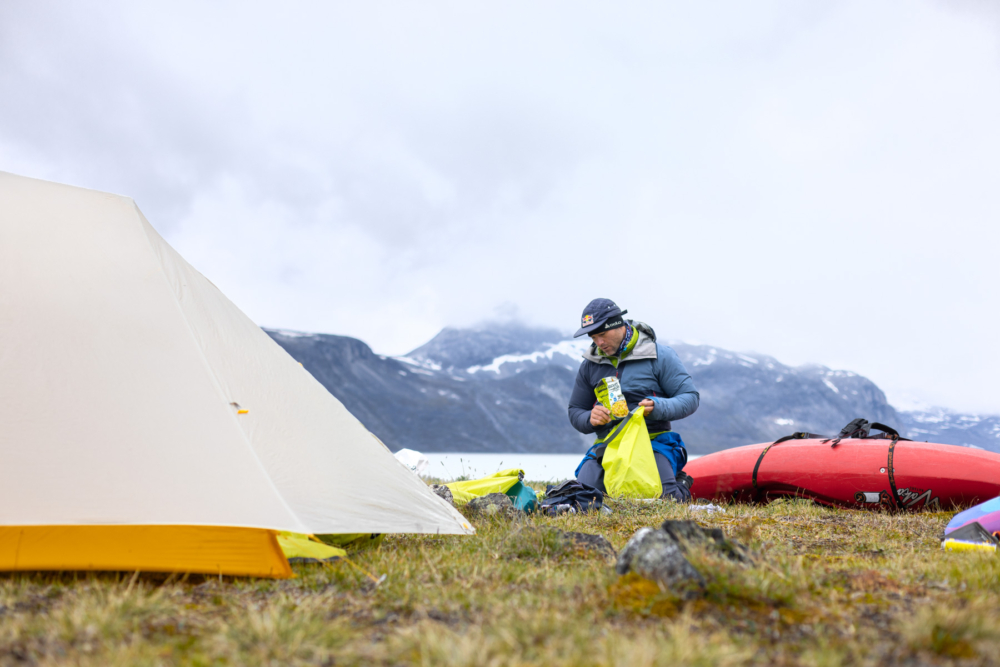
The flight into Nuuk set the tone. As we descended, the windows filled with ice-streaked peaks and jagged coastlines. The capital looked more like an outpost than a city. Greenland doesn’t necessarily welcome you in—it challenges you from the start. Landing felt less like an arrival and more like a commitment.
The Journey North
We kicked things off on a Targa 25 boat, hammering 110 km into the depths of the Ameralik Fjord. We offloaded near midnight and dropped onto a bare granite shoreline, where the wilderness took over. From there, it was all on us. Ten days of food. Emergency gear. Dry suits. Tents. Everything packed into our boats.
We pushed off with no backup, no real exit plan. Our only guide: a hopeful line traced on a map.
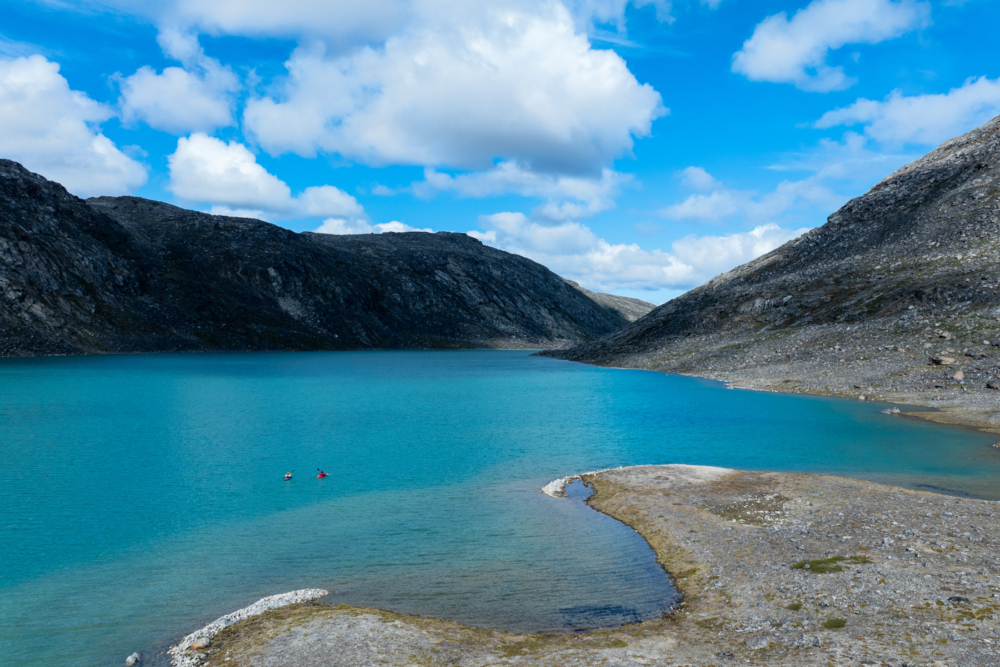
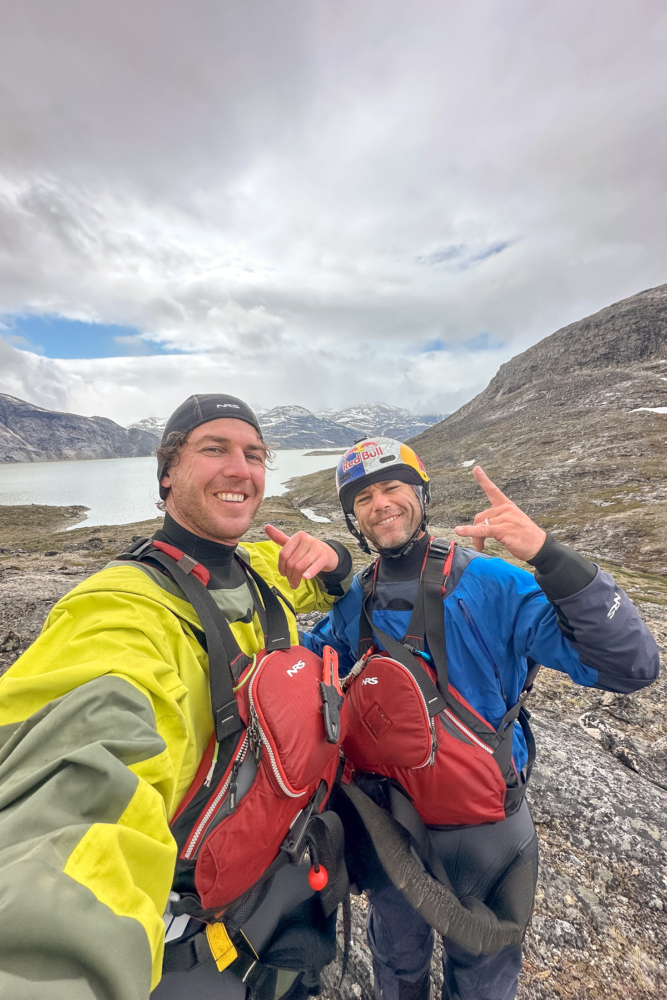
Portaging into Isolation
We hauled overland through the Kangerluarsunnguup Tasersua basin, dragging our kayaks across boggy tundra, past herds of curious reindeer, using the river system as our only trail markers. The terrain was raw and humbling. Huge snow patches hung on despite the July sun, with granite slabs stretching to the sky. The 45 km portage left us feeling even more remote, even more committed.
After a 40 km lake paddle, we hit the wall: an 800-meter alpine climb toward Isortuarsuup Tasia. The final pass. We climbed in silence, surrounded by fractured ridgelines and snow-fed tarns. At the summit, we paused—not just to rest, but to take it all in.
The valley behind us was gone. Ahead lay a corridor of alpine lakes and braided creeks, all feeding the headwaters of the Qororssup Kûgssua River. We reloaded the boats for the descent. From here, gravity would be our trail. On the evening of July 8th, we reached Isortuarsuup Tasia.
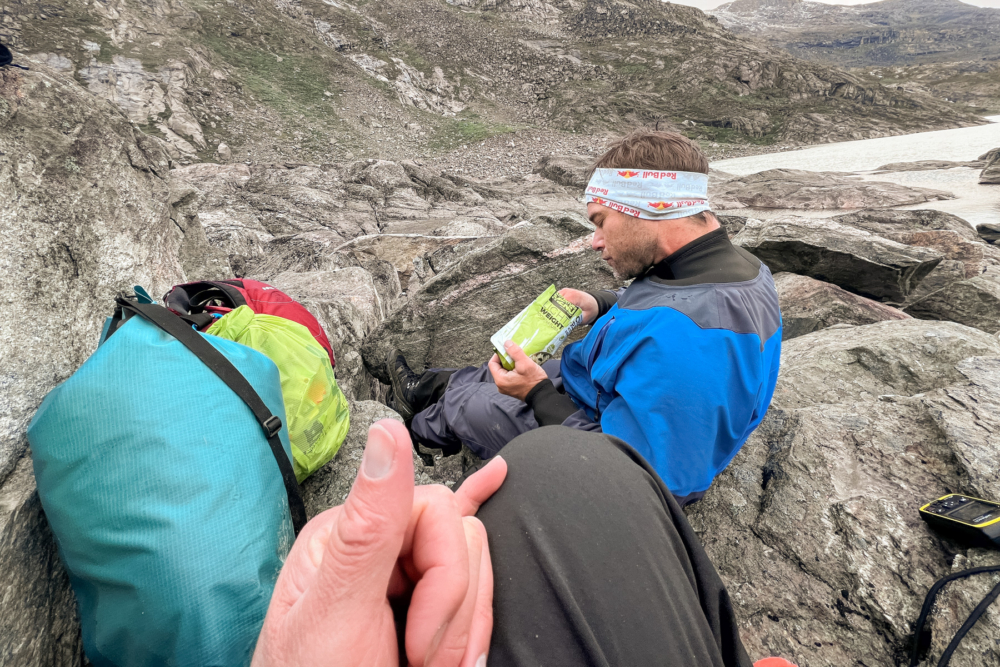
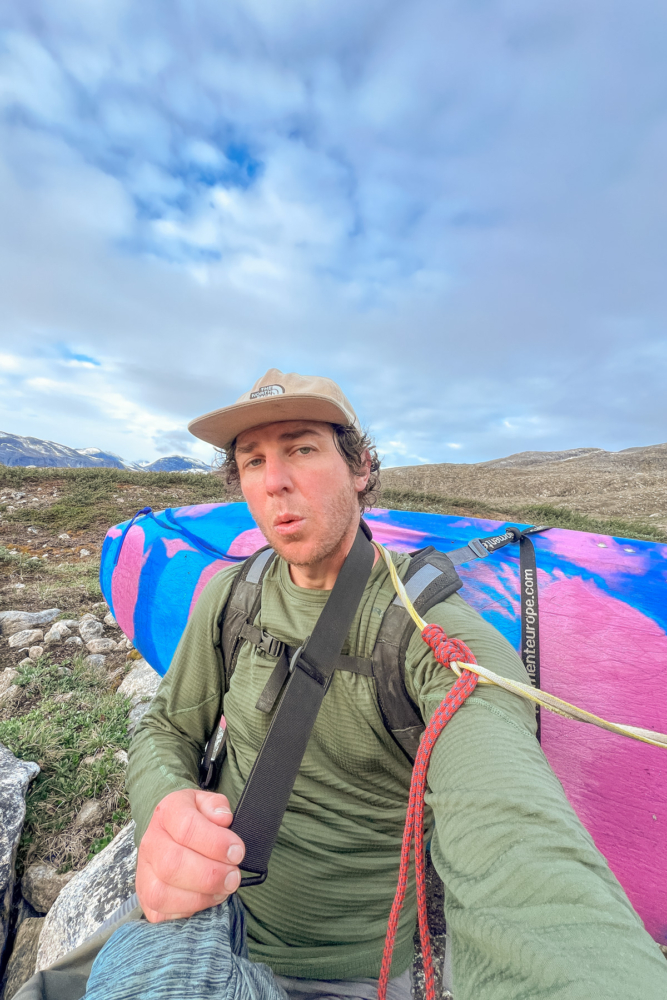
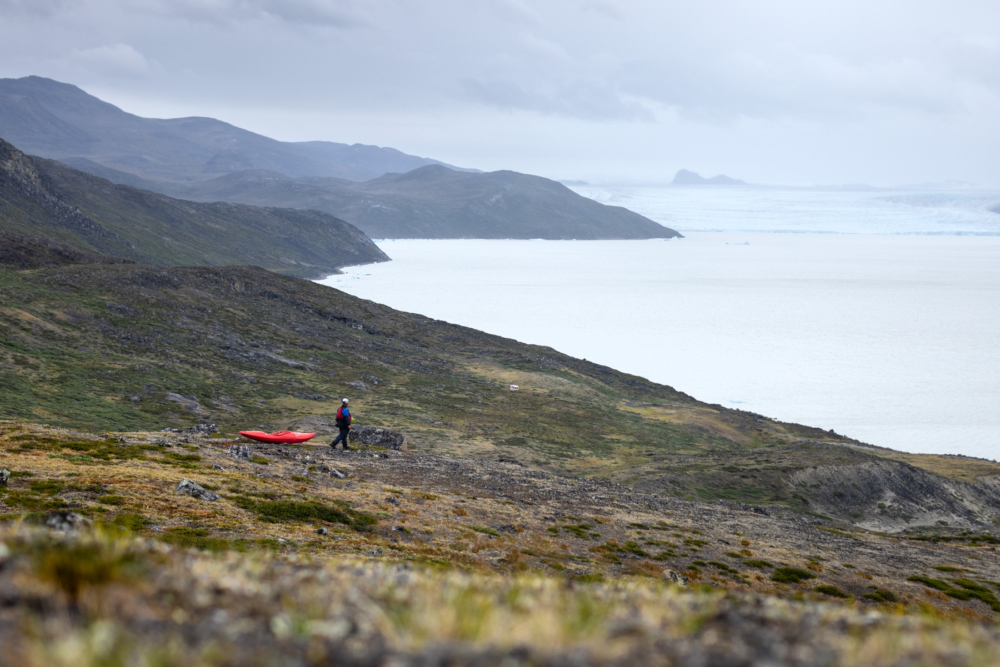
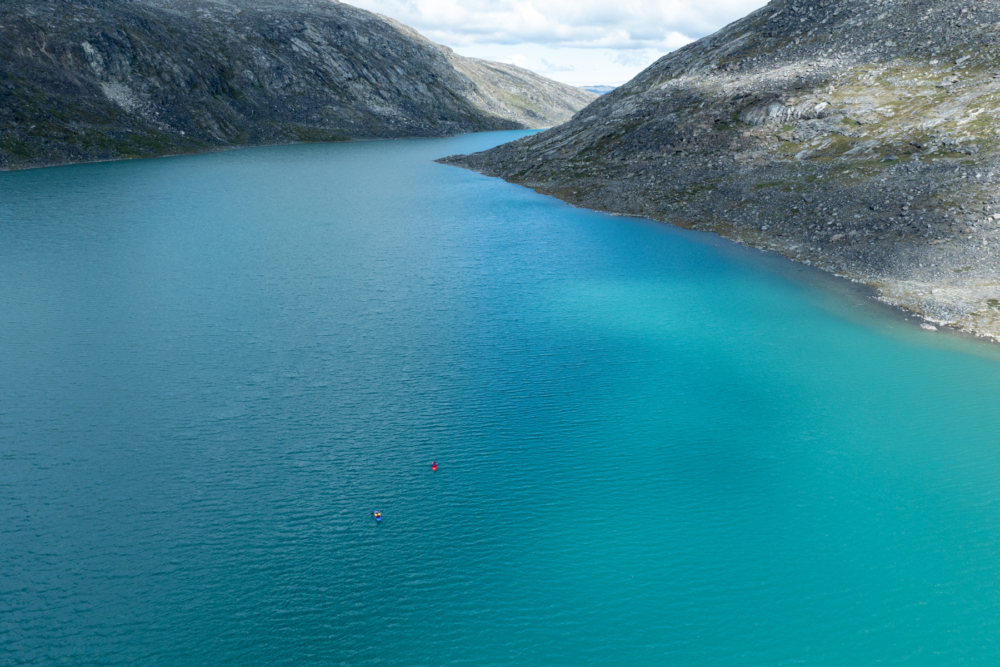
But Greenland wasn’t about to let us through that easily. A brutal headwind hammered us for 20 km across the lake. The temps dropped below freezing. Ice crashed off distant peaks falling into the lake. By the time we reached the outflow, we were wrecked. We set camp in a rocky alcove and tried to warm up.
The next morning revealed the river’s character. The water dropped fast out of the lake, funneling into a tight gorge, flanked by towering walls and a waterfall that illustrated the power of this place. This was supposed to be the mellow section. Instead, we were staring straight into the eyes of the beast.
Flow Too High, Margin Too Thin
We gave it a shot, tentatively dropping into a runnable upper stretch. It felt like paddling a freezing Indus. Big water. Powerful. Loaded boats. In the back of our minds was the section downstream where the river narrowed and the gradient spiked. We knew that once we committed to the lower gorge, there was no exit except to make it to the Alanngorlia Fjord. And, based on the upper section, portaging looked impossible.
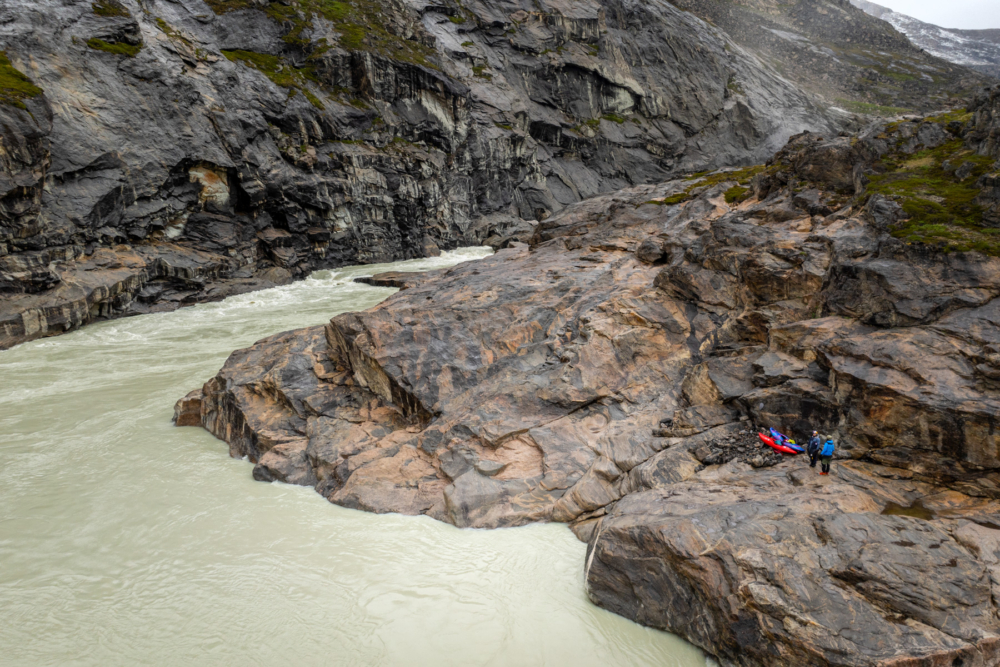
We did the math. Four days of food left. River levels far higher than expected. No chance to scout the crux. One swim could mean a lost boat, and with it, our shelter, food… everything. While a helivac was an option, it’s not something we wanted to rely on.
We sat up on the rocks and debated for a few hours. Cooked a meal. Rechecked maps. Ran simulations in our heads. In the end, we pulled the pin and turned back. Not an easy call, but the right decision.
Four Days Backwards
There’s nothing quite like turning around and retracing your hard-earned steps. We loaded up the boats, and our shoulders seemed to scream a little louder as we began the long slog back. Step by step, we clawed our way out. On July 11th, we hit the edge of Tasiussarssuaq and floated toward the sea, the final stretch of lakes melting into arctic water.
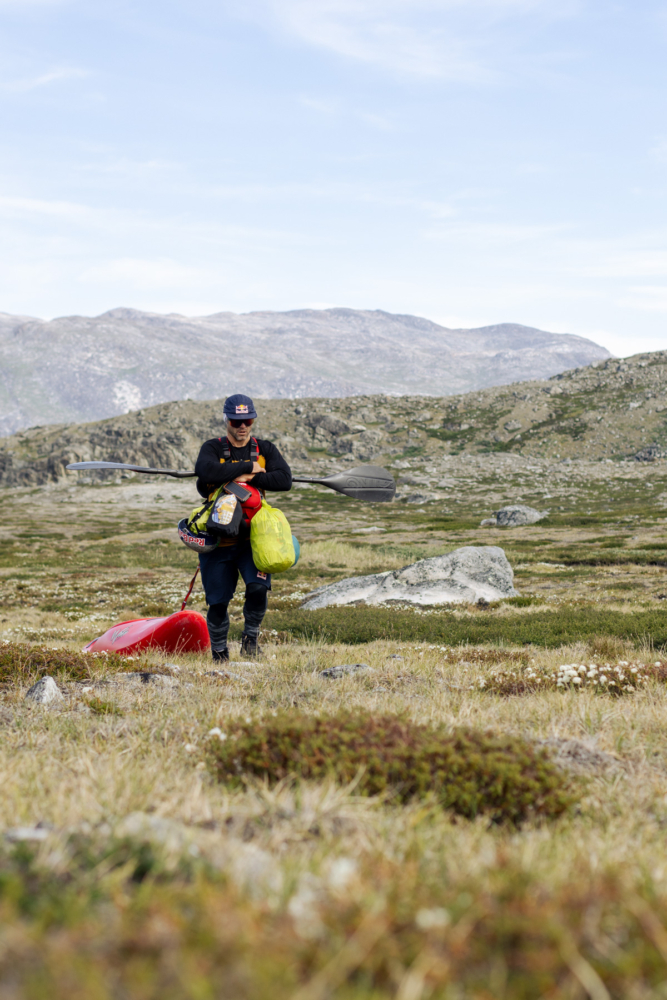
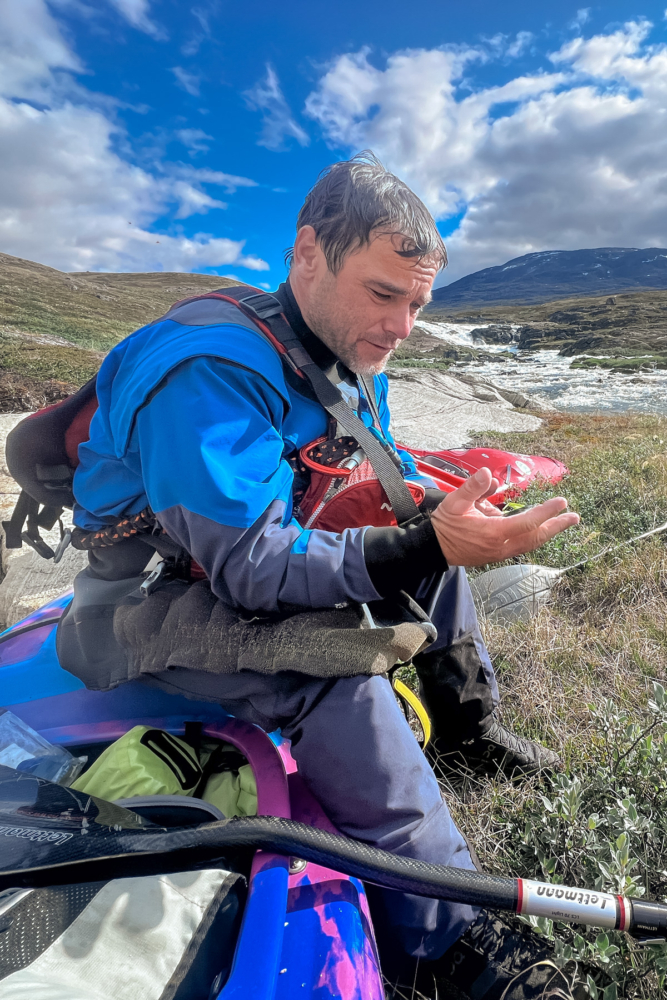
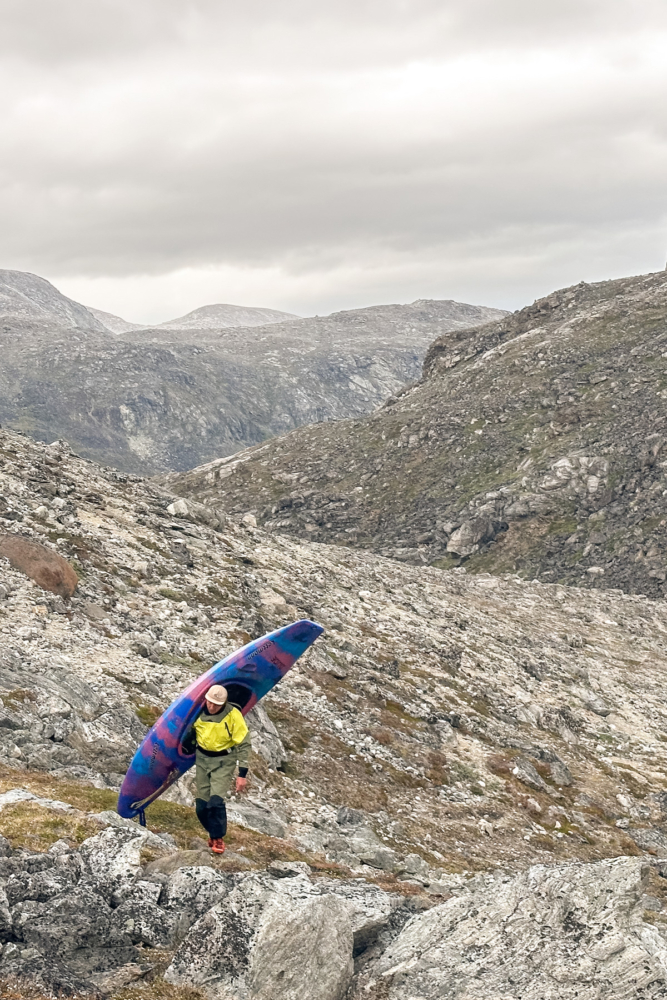
Finally, we began to paddle along Greenland’s coast, which was surreal. Cliffs towered overhead. Ice caved into the sea. Whales, cod and seals hid in the low fog. On July 13th, we landed back in Nuuk. Salt-crusted. Sore. Humbled. But proud.
Reflections on the Edge
Kayaking in Greenland isn’t easy. It’s adventure in the truest sense of the word, a place that blends together so many variables that the kayaking is merely a small part of the journey.
In the end, this was a test of judgment. The kind of expedition that shows you your limits, then asks what you’re going to do with them. We spent eight days, traveling over 240 km exploring Greenland, and we hadn’t even scratched the surface.
The Qororssup Kûgssua still flows, untouched. Maybe we’ll be back. Or maybe someone else will pick up where we left off. Either way, we were there. We prepared. We made the call. And we made it home.
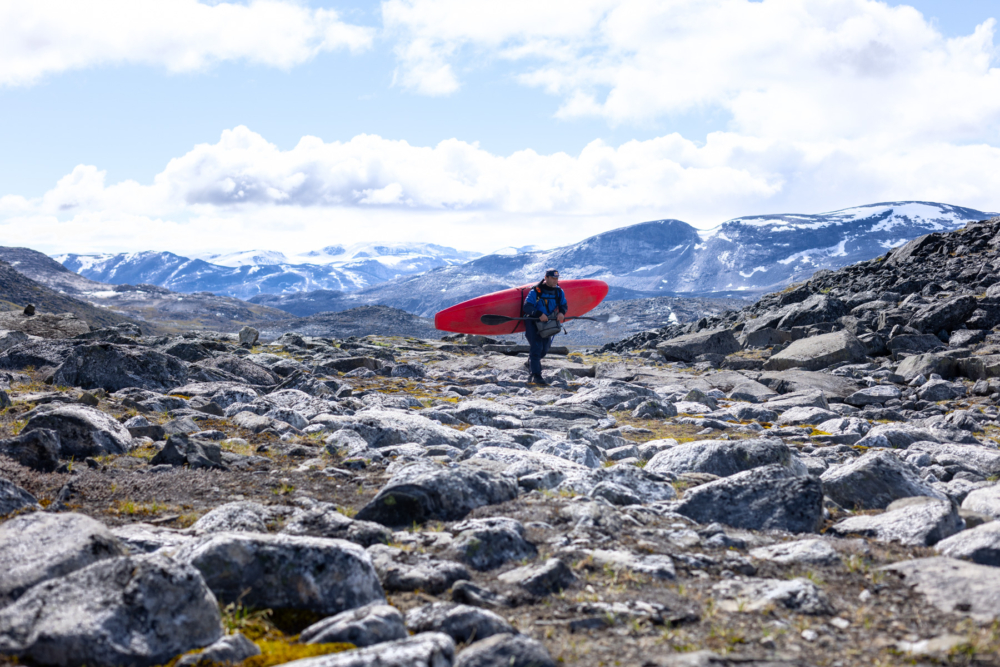
***
Photography courtesy of Mike Dawson and Vavřinec Hradilek.